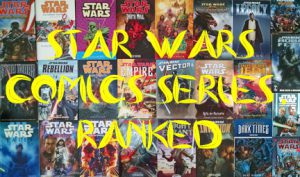After at least 160 novels (more if you delve into children’s books) from 1976-2014, the Expanded Universe ended a few years ago, but it’s not forgotten, and these 10 books stand the test of time. On the 40th anniversary of “Star Wars,” let’s take a look back at these classics, counting down to the all-time best “Star Wars” novel.
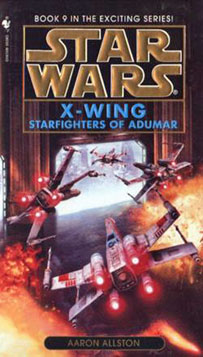
10. “X-Wing: Starfighters of Adumar”
By Aaron Allston (1999)
I celebrate the entire complexly plotted “X-Wing” series, but this standalone novel is my favorite because it’s just plain fun. Like a superhero-comic writer picking his team of heroes, Allston grabs Wedge, Hobbie, Janson and Tycho (who happen to be the four “X-Wing” characters who come from the movies) and puts them through their paces on a planet that demands a test of pilots’ skills before it decides to join the New Republic or the Empire.

9. “Han Solo’s Revenge”
By Brian Daley (1979)
This is pure dime-store deliciousness, as Han Solo and Chewbacca are in their prime as smugglers, but also fall upon hard times in part because of their innate goodness (Han refuses to transport slaves). In a book that could’ve inspired “Firefly,” Daley’s prose sings as Han travels to diverse planets while juggling temporary teammates, dealing with the Falcon’s “damn fluidics,” dodging gun-slinging rival Gallandro and engaging in the saga’s first swoop bike race – all for the sake of tracking down the 10,000 credits he’s owed.
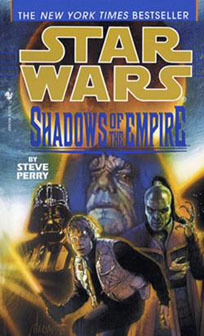
8. “Shadows of the Empire”
By Steve Perry (1996)
This is the definitive chronicle of what happened between “The Empire Strikes Back” and “Return of the Jedi.” (Marvel got there first, but their stories were comparatively thin, hampered by not knowing what would happen in “Jedi.”) Revisiting the main characters in the classic era is a pure pleasure, seeing the stories behind film references (like the Bothans who died retrieving the Death Star II plans) is a blast, and crime lord Prince Xizor joins the pantheon of villains as worthy political rival to Darth Vader. As was intended, “Shadows” has a scope worthy of “Episode 5 1/2.”
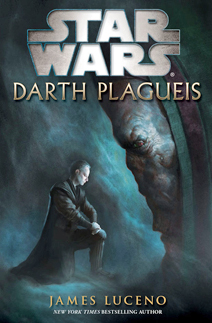
7. “Darth Plagueis”
By James Luceno (2012)
George Lucas kept some things off limits in case he wanted to tell the story himself someday, but occasionally he let authors tackle something big. In this misleadingly titled book, we get the complete backstory of Palpatine (who never gets a first name in Legends lore), from a young political schemer to the murderer of his eponymous master to the secret Sith Lord who takes the first steps to galactic rule. One of the premier continuity gurus, Luceno weaves in the events of “Cloak of Deception,” “Darth Maul: Shadow Hunter” and Maul’s backstory from TV’s “The Clone Wars,” taking the narrative right into the heart of “The Phantom Menace.”
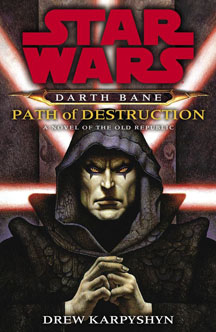
6. “Darth Bane: Path of Destruction”
By Drew Karpyshyn (2006)
The “Episode I” novelization’s mention of Darth Bane intrigued fans at a time when the name “Darth” was rare; before that movie, Vader was the only Darth we’d heard of. Karpyshyn tells the full backstory of Bane — what shaped him to believe in the Sith ways, and what inspired him to create the Rule of Two. The author draws from and enhances three pre-existing works: The illustrated novel “Dark Forces: Jedi Knight,” the comic book series “Jedi vs. Sith” and the short story “Bane of the Sith.”

5. “Heir to the Empire”
By Timothy Zahn (1991)
This is the only “Star Wars” novel where I distinctly remember the experience of reading it for the first time. After several dark years of “Star Wars” merchandizing (something that will never be repeated in our lifetimes), it was an unexpected joy to read the official further adventures of our heroes after the events of “Return of the Jedi,” and to visit new planets and – even more so – familiar planets like Dagobah. Zahn captures the essence of the old gang perfectly while introducing future icons Grand Admiral Thrawn and Mara Jade.
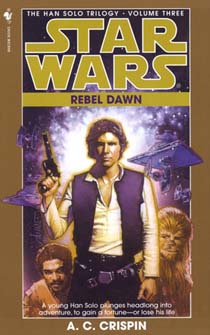
4. “Rebel Dawn”
By A.C. Crispin (1998)
On paper, the idea that Han Solo’s girlfriend is central to the capture of the Death Star plans (a plot point that was chronicled in the Disney continuity as the movie “Rogue One”) seems a little too convenient. But “Rebel Dawn” not only logically works, it does so while showing the relationship with Bria Tharen that turned Han Solo cynical about women and the Rebellion. A masterful continuity writer, Crispin allows space for the entire “Han Solo Adventures” trilogy, addresses the Rebels’ suicides from the “Star Wars” radio drama, and brings the narrative right up to Han’s movie debut in the Mos Eisley cantina.
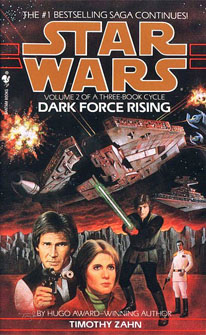
3. “Dark Force Rising”
By Timothy Zahn (1992)
The novelty of reading about Luke Skywalker, Han Solo and Princess Leia soon after “Return of the Jedi” still had power in this second “Thrawn Trilogy” novel, but it’s a notch better because the plot heats up. The biggest hook is the heroes’ and villains’ race for the Katana Fleet, but additional weight comes from the fact that Zahn explores clones for the first time – and, surprisingly, he doesn’t write anything that majorly contradicts George Lucas’ later prequel writings.
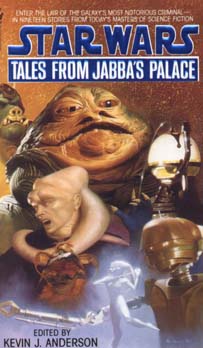
2. “Tales from Jabba’s Palace”
Edited by Kevin J. Anderson (1996)
There is no better “Star Wars” book when it comes to bringing a single architectural structure to life. The condensation-dripping tunnels of the titular palace provide respite from Tatooine’s heat, but we know if we venture too deeply we’ll meet all the creepy creatures from the opening act of “Return of the Jedi” – and maybe we’ll unwittingly become one of those brain-walking B’omarr monks like poor Bib Fortuna. Putting this a notch above the other “Tales” anthologies, Anderson successfully herds the authors together to tell an overlapping serial killer mystery, adding richness to the overall tome.
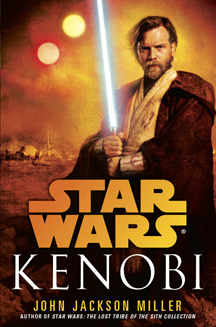
1. “Kenobi”
By John Jackson Miller (2013)
“Star Wars” is sometimes described as a Western, but this novel truly emphasizes the genre’s elements through the setting of Tatooine and the character of Obi-Wan “Ben” Kenobi during his time as a loner in the Jundland Wastes, waiting for Luke Skywalker to come of age. Even as Miller irons out continuity oddities – ranging from Ben’s rapid aging to the reason why that random alien was known as “Jabba the Hut” back in the Marvel comics – he weaves a melancholy rural epic that stands as the Galaxy Far Far Away’s answer to “Shane.” “Kenobi” is the best “Star Wars” book I’ve ever read.


